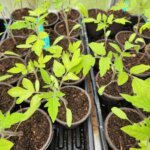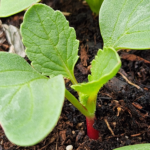One of the most common questions gardeners ask, especially when starting out, is whether it’s better to grow plants in raised garden beds or containers.
Both methods work, and both have real advantages. The right choice depends on your available space, long-term plans, budget, and what you actually want to grow.
In this guide, I’ll break down the benefits of raised garden beds vs containers, show where each option shines, and explain why we personally prefer raised beds after years of hands-on gardening experience at DBSFarmWilson.
By the end of this article, you’ll know exactly which growing method makes the most sense for your garden, not just in theory, but in real-world use. No matter which method you choose, pairing it with our guide on how to start seeds indoors helps ensure strong, healthy plants from the beginning.
This post contains affiliate links. If you use these links to buy something we may earn a commission. Thanks.
Benefits of Raised Garden Beds
Choosing to grow your plants in raised garden beds offers numerous benefits. Raised garden beds give you greater control over soil quality, improve plant health, make maintenance easier, and can even boost productivity. They’re an excellent option for gardeners looking to maximize their growing space and minimize common gardening challenges.
Growing plants in raised garden beds offers significant advantages for gardeners seeking long-term, productive growing spaces. Raised beds provide more room for plants to spread their roots, allowing for larger, healthier growth and higher yields. The deeper soil a raised garden bed provides retains moisture and nutrients more effectively, reducing the need for frequent watering and feeding while creating a stable environment for strong root development.
Compared to containers, raised beds require less maintenance and can last a decade or more, especially when built from durable materials like cedar or metal. They also heat up faster in the spring, giving plants an early start and extending the growing season. This combination of space, soil health, and longevity makes raised beds an excellent choice for growing a wide range of crops with minimal effort.
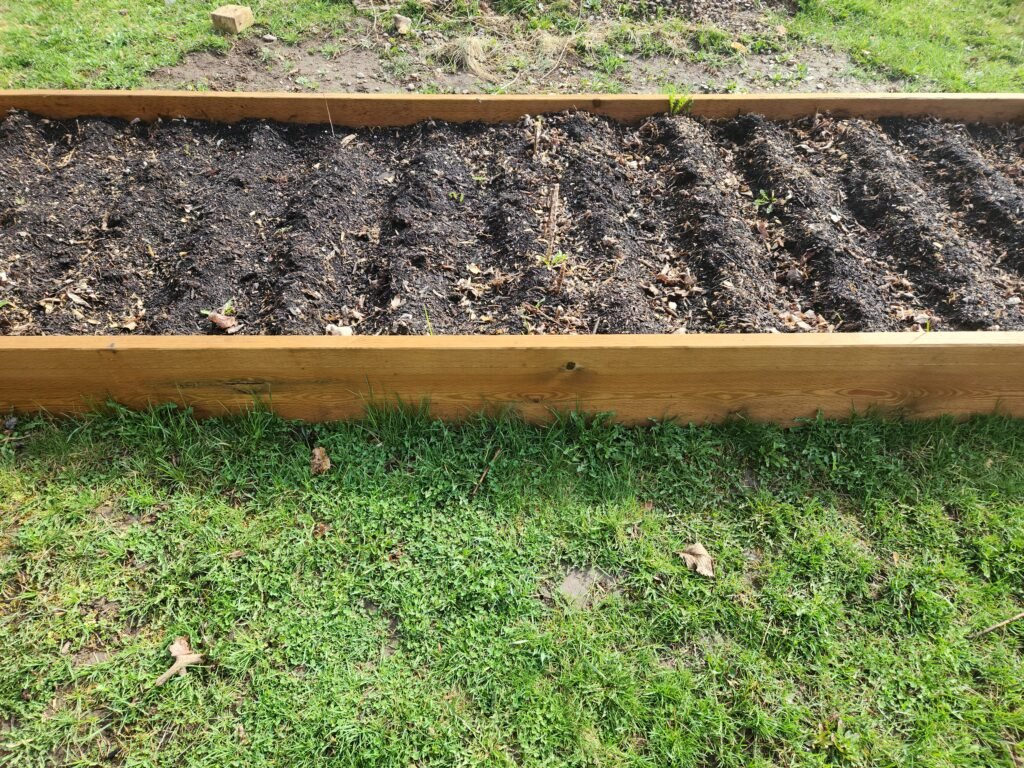
Benefits of Container Gardening
Growing plants in containers offers many advantages, making it an ideal option for gardeners with limited space or challenging growing conditions.
Containers gardening offers unmatched flexibility and convenience, making it ideal for gardeners with limited space or specific growing needs. Containers are easy to move, allowing you to adjust for sunlight, weather, or seasonal changes, which helps plants thrive in varying conditions. This method is perfect for small spaces like balconies, patios, or windowsills, where traditional garden beds aren’t an option.
Containers also have a lower initial cost compared to raised beds, as you only need a few pots and a tailored soil mix to get started. Additionally, container gardening allows for precise soil control, making it easier to create the ideal growing environment for specific plants, such as acidic soil for blueberries or fast-draining soil for succulents. This level of customization ensures healthier plants and more successful harvests.
Raised Garden Beds vs Containers Table Overview
Whether raised garden beds or containers are better for growing a garden depends on your available space, climate, plant types, and personal preferences. Each method has distinct advantages and potential drawbacks. Let’s compare them side-by-side:
| Factor | Raised Garden Beds | Containers |
|---|---|---|
| Space Requirements | Requires more space; typically 4×8 feet or larger | Works well for small spaces like balconies, patios, and indoors |
| Soil Control | Better soil depth and larger volume allow for more consistent moisture and nutrient retention | Allows for precise soil control, but limited soil volume can dry out quickly |
| Mobility | Permanent or semi-permanent; difficult to relocate once built | Fully portable; easy to move for sunlight, weather, or seasonal changes |
| Cost | Higher initial cost due to materials and soil volume needed | Lower initial cost; small pots and soil mixes are inexpensive |
| Pests and Weeds | Less prone to weeds and some pests; can use hardware cloth to block burrowing pests | Easier to protect from pests but may attract root-bound issues or soil pests if not rotated |
| Drainage | Excellent drainage if properly built with good soil mix | Depends on pot size and drainage holes; can dry out quickly |
| Temperature Control | Warms up faster in spring; more stable soil temperature | Heats up quickly but also loses heat quickly; roots may overheat |
| Plant Variety | Accommodates larger plants and deeper-rooted crops like tomatoes, carrots, and squash | Best for shallow-rooted plants and herbs; limited space for larger crops |
| Yield | Higher overall yields due to better root space, soil health, and planting density | Limited yield due to smaller soil volume and less nutrient retention |
| Maintenance | Less frequent watering due to larger soil volume; better for deep watering | Needs more frequent watering and feeding due to small soil volume |
| Accessibility | Easier to work with at standing height if built high enough | Great for small, indoor, or patio gardens; hanging options provide additional accessibility |
| Longevity | Can last 5–15+ years depending on materials used (e.g., cedar, metal) | Containers may degrade or crack over time (plastic lasts ~3–5 years; terracotta can crack) |
When Raised Garden Beds Are Better:
- You have enough outdoor space and want to grow larger crops.
- You’re aiming for higher yields and longer-lasting infrastructure.
- You prefer less frequent watering and maintenance.
- You want a more organized and aesthetically pleasing garden layout.
Best for:
- Large gardens
- Deep-rooted vegetables (carrots, asparagus)
- High-yield crops (tomatoes, squash, beans)
- Perennials (berries, asparagus)
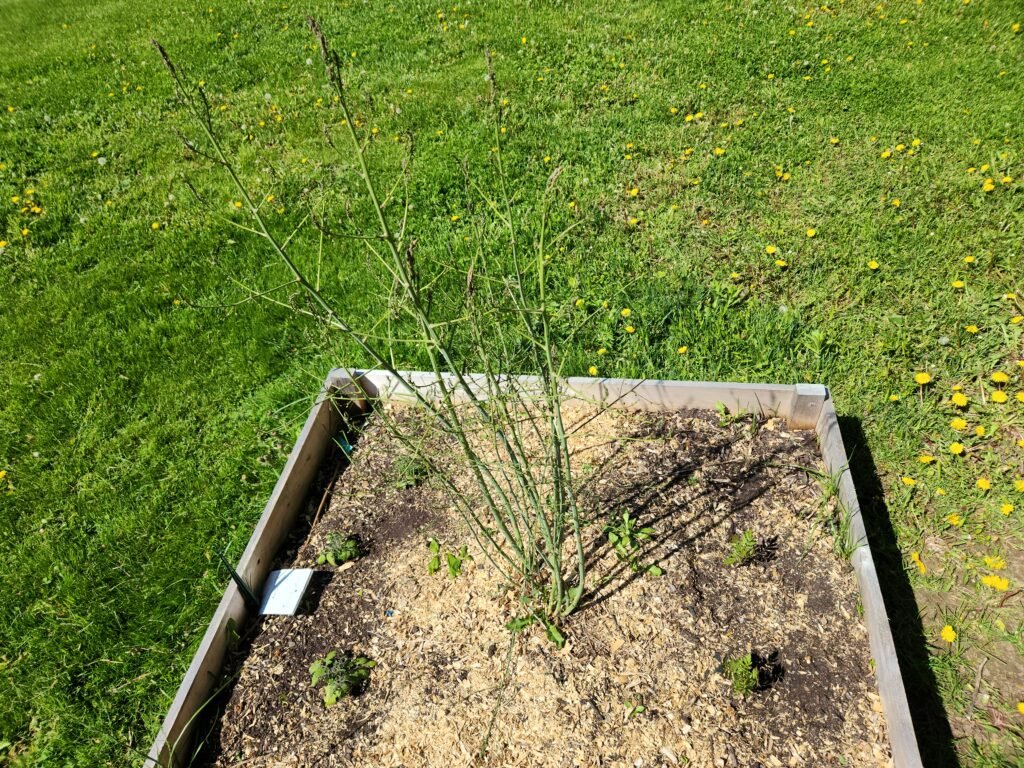
When Containers Are Better:
- You have limited space (balcony, patio, or small yard).
- You want flexibility to move plants based on sunlight and weather.
- You prefer growing herbs, flowers, and shallow-rooted vegetables.
- You’re working with poor or contaminated soil.
Best for:
- Small spaces and apartments
- Herbs and shallow-rooted plants (lettuce, spinach)
- Mobility and easy rearrangement
- Decorative and mixed plantings
Best of Both Worlds
If you’re looking to extend your growing season even further, raised garden beds can also be paired with simple season-extension structures. We often cover our beds using a DIY hoop house, and our step-by-step guide on how to build a hoop house shows exactly how to protect plants from frost while keeping costs low.
Combine raised beds and containers for maximum flexibility! Use raised beds for large crops and high-yield vegetables, and containers for herbs, flowers, and more delicate plants. For example, you could grow tomatoes and peppers in raised beds while keeping herbs and flowers in containers for easy access and decoration.
Overall Recommendation by DBSFarmWilson
If your goal is to set up long-term gardening on your property, go with a raised garden bed. If you’re short on space then containers are best. The overall convenience of container growing – in my opinion, does not overpower the benefits of growing in a raised garden bed. In fact, sometimes I struggle to remember to water my container plants more frequently than my raised garden beds. The container plants are fine for now, but when we move to our final homestead in the next year, everything is going in a raised bed, flowers, herbs, etc. If you have the permanence of a property and space, grow in a raised bed.
How to Build Raised Garden Beds (Step-by-Step)
Raised garden beds are a popular and practical way to grow vegetables, herbs, and flowers in your yard or garden. They provide many benefits over traditional gardening, including improved soil drainage, better weed control, and easier access for planting and harvesting. Let’s cover everything you need to know about building raised garden beds, from selecting materials to planting and maintaining your garden.
Choosing the Right Location
The first step in building raised garden beds is to choose the right location. You’ll want to select an area of your yard or garden that receives plenty of sunlight and is well-drained. You’ll also want to consider the size of your garden beds and the space you have available. Ideally, you’ll want to leave enough room between your beds to allow for easy access and movement.
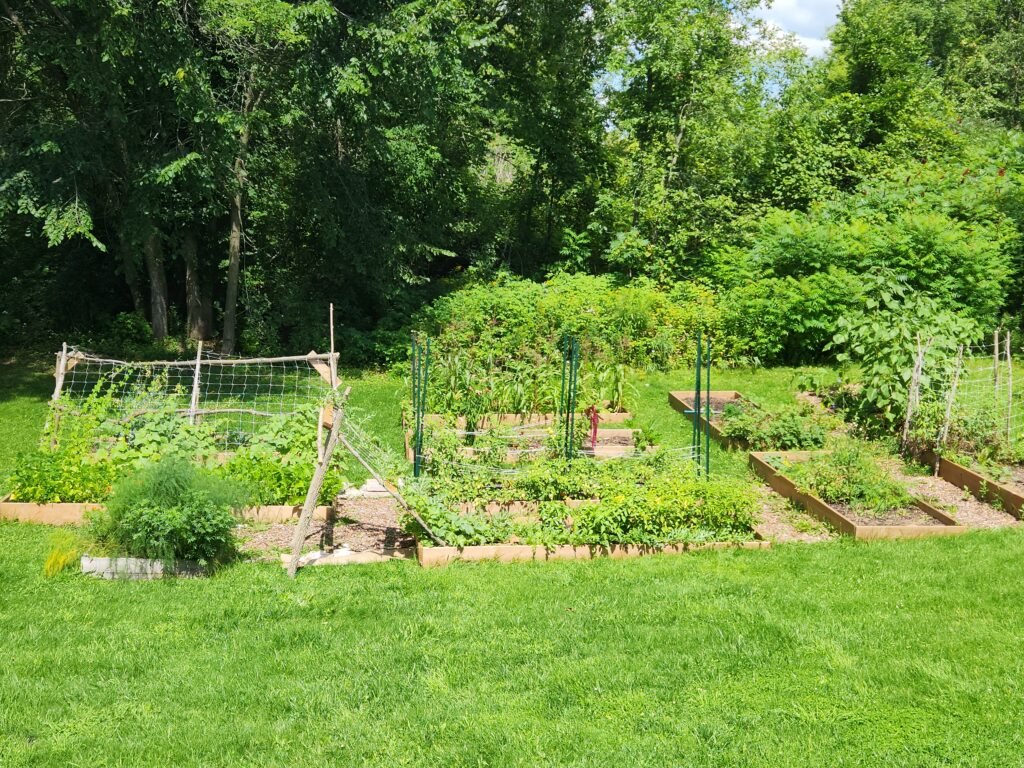
Selecting Materials
Once you’ve chosen a location for your garden beds, it’s time to select your materials. You can build your garden beds out of a variety of materials, including wood, concrete blocks, bricks, and stone. Here are some factors to consider when selecting your materials:
- Durability: Your garden beds will be exposed to the elements, so you’ll want to choose materials that are durable and can withstand the weather.
- Cost: The cost of materials can vary widely, so you’ll want to choose something that fits within your budget.
- Aesthetics: The materials you choose will also affect the look of your garden beds, so you’ll want to choose something that fits your style and complements your landscaping.
Building the Garden Beds
Once you’ve chosen your materials, it’s time to start building your garden beds. Here are the basic steps:
- Measure and mark the area: Use a measuring tape and stakes to mark the area where you’ll be building your garden beds.
- Level the ground: Use a shovel or a garden rake to level the ground within the marked area. This will ensure that your garden beds are even and stable.
- Build the frame: Use your chosen materials to build the frame of your garden beds. If you’re using wood, you can use 2×6 or 2×8 boards to create a sturdy frame.
- Add support stakes: Depending on the size of your garden beds, you may need to add support stakes to keep the frame stable. These can be driven into the ground at each corner of the bed.
- Add soil and compost: Fill the garden beds with a mixture of topsoil and compost, leaving a few inches of space at the top.
- Level the soil: Use a garden rake to level the soil within the garden beds.
- Water the soil: Water the soil thoroughly to help settle it in place.
Planting and Maintaining Your Garden
Once your garden beds are built, it’s time to start planting! Here are some tips for planting and maintaining your raised garden beds:
- Choose your plants: Select plants that are well-suited for your growing conditions and the time of year. You can plant a variety of vegetables, herbs, and flowers in your garden beds.
- Plant spacing: Be sure to leave enough space between your plants to allow for proper growth and airflow to prevent fungal growth.
- Watering: Water your garden beds regularly and close to the soil level to keep the soil moist but not waterlogged.
- Fertilizing: Use a balanced 20 20 20 fertilizer to provide nutrients to your plants throughout the growing season.
- Mulching: Mulch around your plants to help retain moisture and suppress weeds. Learn all about mulching here.
- Weed control: Keep your garden beds free of weeds by pulling them as soon as they appear.
- Harvesting: Harvest your plants when they are mature and ready for picking. This will help ensure that your plants continue to produce throughout the growing season.
Frequently Asked Questions About Raised Garden Beds vs Containers
Raised garden beds are better for long-term gardening, higher yields, and deep-rooted crops. Containers are better for flexibility, small spaces, and short-term growing.
Yes. Raised beds generally produce higher yields because plants have more soil volume, better moisture retention, and more room for root development.
Containers usually cost less upfront. Raised beds cost more initially but last many years and require less frequent soil replacement.
Herbs, lettuce, spinach, flowers, and compact vegetables grow very well in containers due to their shallow root systems.
Most vegetables grow best in raised beds that are at least 12 inches deep, though root crops like carrots benefit from 18 inches or more.
Yes, and many gardeners do. Raised beds work well for large or high-yield crops, while containers are perfect for herbs, flowers, and flexible planting.
Final Thoughts
We hope you enjoyed this article on the differences between raised garden beds and containers, plus the section on how to build a raised garden bed! If you did, make sure you check out the other content on growing guides, seed saving guides, recipes and more. We are growing our website with more articles all the time, and we invite you to grow with us. Whether you’re a seasoned gardener or just starting out, it can be an enriching experience. If you have any questions or want to share your reasons to choose raised garden beds vs containers, feel free to leave a comment below. Happy gardening!



